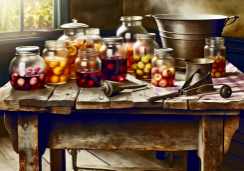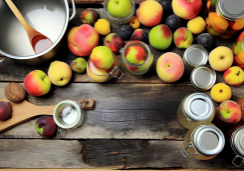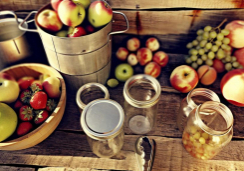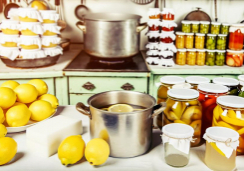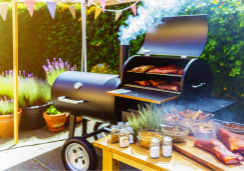Secrets to Flawless Homemade Pizza Dough Revealed
As you stand in your kitchen, you're just a stone's throw away from crafting the perfect homemade pizza dough, but there's a fine line between good and great. You've got the ingredients lined up, ready to mix, yet the true artisan's touch lies in understanding the nuances that transform a simple mixture into a pizzeria-worthy base.
Let's unravel the threads of this culinary mystery together. You'll find that selecting the right flour is just the tip of the iceberg; it's the interplay of yeast activation, hydration, and the finesse of kneading that really weave the magic into every stretchy, chewy bite.
So roll up your sleeves and get ready to unlock the secrets that will elevate your dough from flat to fantastic, and remember, the devil is in the details, which we're about to explore further.
Selecting the Right Flour
When making homemade pizza dough, often the key to achieving your desired crust texture lies in choosing the right type of flour. The Best Pizza Dough starts with understanding how much flour impacts your end result.
Grab your cups of flour, but don't just reach for any kind. If you're aiming for that chewy and crispy edge in your pizza crust, a high-protein bread flour is your go-to. It's the secret to the perfect balance of texture that'll make this pizza dough stand out.
But maybe you're after a softer, more tender bite? Then all-purpose flour is your ally, versatile enough to deliver a crust that's just right for cuddling up to your favorite toppings.
To craft a homemade pizza with a lighter, airy crust that still snaps crisply when you take a bite, Italian 00 flour is the artisan's choice.
Don't shy away from whole wheat flour either. It's the path less traveled, but it rewards you with a nuttier flavor and a denser, hearty crust.
Mastering Yeast Activation
To unlock the full potential of your homemade pizza dough, mastering the art of yeast activation is crucial, and that starts with getting your water temperature just right. Warm water, precisely between 110 and 115 degrees Fahrenheit, is the sweet spot for coaxing your yeast to life. It's wise to use a thermometer to ensure accuracy—guesswork can lead to water that's either too hot, risking the death of the yeast, or too cold, where it won't activate at all.
Once you've nailed the temperature, sprinkle one teaspoon of yeast into the water and let it sit for a few minutes. This is when the magic happens: the yeast mixture will begin to froth and bubble as it comes to life, a clear sign that your pizza dough will rise to the occasion. For best results, let it sit undisturbed, allowing the yeast to fully dissolve and become active.
Next, cover and let your yeast mixture rest. You can use plastic wrap and let it sit in a warm, draft-free spot until it's lively and bubbly. This waiting period is essential—patience here means a better rise in your dough-making endeavors.
Achieving Optimal Hydration
Achieving the perfect hydration for your pizza dough hinges on maintaining water at the ideal temperature range of 110 to 115 degrees Fahrenheit, ensuring the yeast is activated properly and your dough develops the right texture. To make sure your water is just right, always use a thermometer. This precision avoids the risk of killing the yeast or failing to activate it, both of which are crucial for those airy bubbles that give life to your dough.
Once you've mastered the temperature, it's time to focus on hydration. This isn't a guessing game—measure your water accurately. The right amount of water will make your dough easy to knead and shape into dough balls. In a large bowl, start by combining the flour with your tempered water. With a bit of elbow grease, you'll soon have a pliable dough ready to be drizzled with olive oil.
As you knead, the texture should be tacky, but not sticky—a sign that you've achieved optimal hydration. It's this balance that will ensure your pizza crusts are crisp on the outside and chewy on the inside. Remember, practice makes perfect. As you make pizza more often, you'll get a feel for the dough and hydration will become second nature.
Kneading Techniques Explored
Mastering the art of kneading is essential for transforming your simple ingredients into a supple, elastic pizza dough ready for topping and baking to perfection. When you begin making your pizza, stir together flour and salt in a bowl. The magic starts as you add yeast and water, then dive in with your hands.
As the kneading techniques explored here unfold, you'll feel the dough come alive. Work the dough for 2-3 minutes, watching it come together into a cohesive mass. You're not just going to make pizza; you're crafting the Secret to Perfect Pizza. Drizzle in olive oil, give the bowl a quick clean, and then give that dough one more minute of your time. This ensures every bit of dough gets the love this recipe deserves.
Don't worry if you need to use a touch more flour to keep it from sticking — just don't add too much flour, or it'll turn tough. After a long 24-hour rest, the dough's character fully develops. You can now divide the dough in half, make two bases, and freeze this dough for another day or go straight to shaping and topping your masterpiece. Remember, the perfect knead is your golden ticket to pizza heaven.
Precision in Proofing
Ensuring your water's temperature hovers between 110 and 115 degrees Fahrenheit is essential, as it's the sweet spot where yeast thrives, transforming your dough into a bubbly foundation for your pizza. To nail this precision, don't just guess—use a thermometer. It's a simple step that safeguards against the disappointment of a flat or over-proofed crust.
Imagine pulling your creation from the oven—whether it's on a pizza stone or a baking sheet—only to find the base lacks those enticing air pockets that make for a different pizza experience. To avoid this pitfall, you must give the proofing process the respect it deserves.
When the dough rises for hours at room temperature, it develops flavors and textures that can't be rushed. But here's a pro tip: if you're not baking the same day, you can let the dough rise slowly in the refrigerator. The next day, simply bring it to room temperature before shaping it into one large masterpiece or dividing it into two or three smaller pies.
Practice makes perfect. As you make more batches, you'll start to recognize the feel of dough proofed just right. So, embrace the process, and let 65 degrees of precision lead you to pizza nirvana.
Frequently Asked Questions
What Is the Secret to Great Homemade Pizza Dough?
To make great homemade pizza dough, you've got to nail hydration levels, kneading techniques, and temperature control. Ensure yeast freshness, let dough rest, develop gluten fully, pick the right flour, balance salt, and add oil wisely.
What Not to Do When Making Pizza Dough?
Don't over-knead your dough or use cold water, as both mistakes impede yeast activation. Skipping fermentation or rushing proofing ruins texture. Avoid skimping salt, inconsistent measurements, ignoring temperature, using all-purpose flour, and forgetting dough rest.
What Is the Secret to the Best Pizza?
For the best pizza, you'll want to perfect your dough with high hydration, precise temperature control, and proper dough fermentation. Choose quality flour, ensure water is pure, activate yeast correctly, knead thoroughly, and rest sufficiently before stretching.
How to Make Homemade Pizza Dough More Flavorful?
To make your pizza dough tastier, pick high-quality flour, balance salt, and tweak water temperature. Add sugar, select the best yeast, and mix in olive oil. Let it ferment and infuse with herbs.
Conclusion
Now you've got the tricks up your sleeve for pizza dough perfection. Choose your flour wisely, activate that yeast at just the right temp, and hydrate with precision.
Get your hands dirty with confident kneading and be patient with your proofing. Remember, practice makes perfect.
So, roll up your sleeves and get ready to impress with your dough skills. Here's to your best homemade pizza yet—crispy, chewy, and utterly delicious.
Go on, give it a spin!




